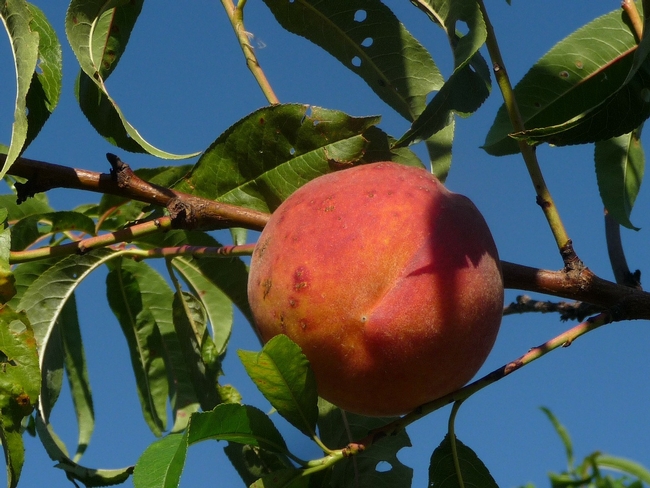Posts Tagged: nectarines
Where Are All the Bumble Bees?
Seen any bumble bees lately? No? Me, neither. It's almost the first day of spring, and bumble bees are as scarce as the proverbial hen's teeth....
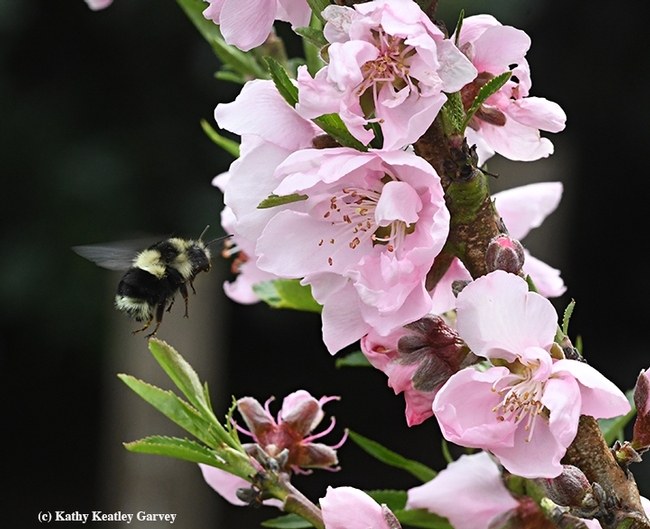
A black-tailed bumble bee, Bombus melanopygus, heading for the Garvey nectarine tree on March 18, 2018 in Vacaville, Calif. (Photo by Kathy Keatley Garvey)
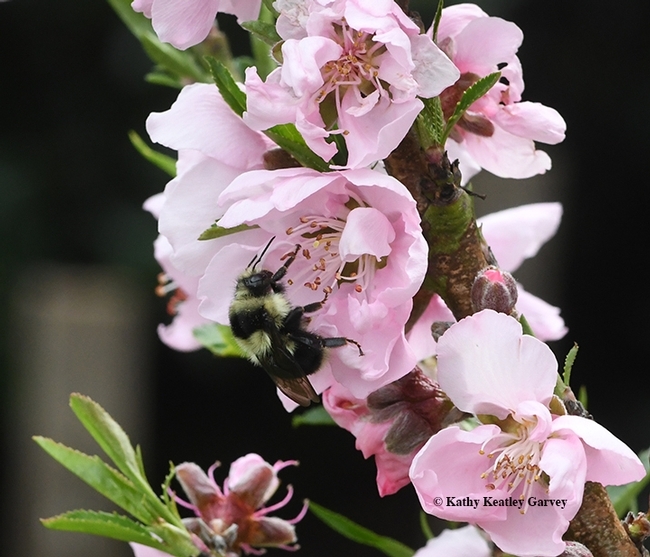
Ahh, sweet nectar! A Bombus melanopygus nectaring on a nectarine blossom on March 18, 2018 in Vacaville, Calif. (Photo by Kathy Keatley Garvey)
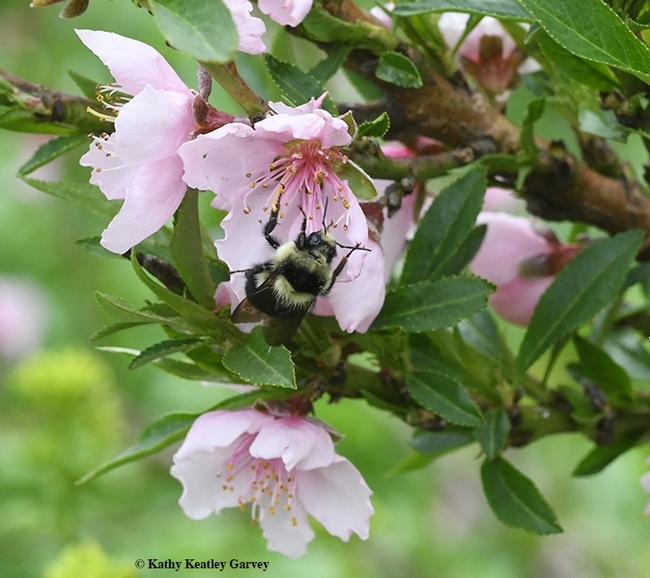
Wait, just a little more! A Bombus melanopygus nectaring on a nectarine blossom on March 18, 2018 in Vacaville, Calif. (Photo by Kathy Keatley Garvey)
It's Tough Being a Bee During the Springlike Rains
It's tough being a bee--especially when you have work to do and the rain won't let you out of your hive. But when there's a sun break, it's...
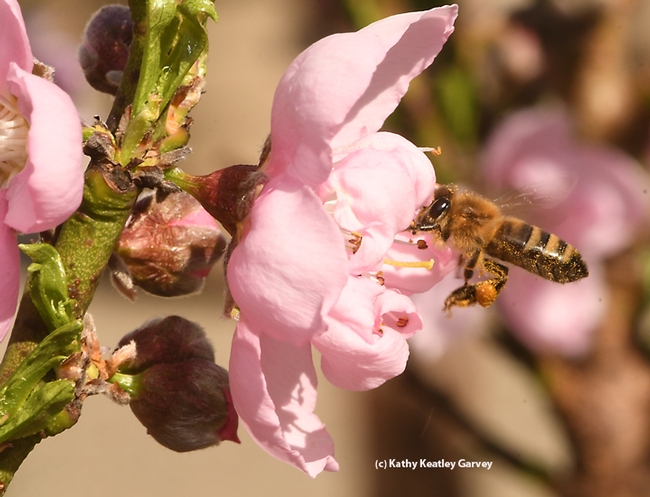
A honey bee pollinating a nectarine blossom in Vacaville, Calif. (Photo by Kathy Keatley Garvey)
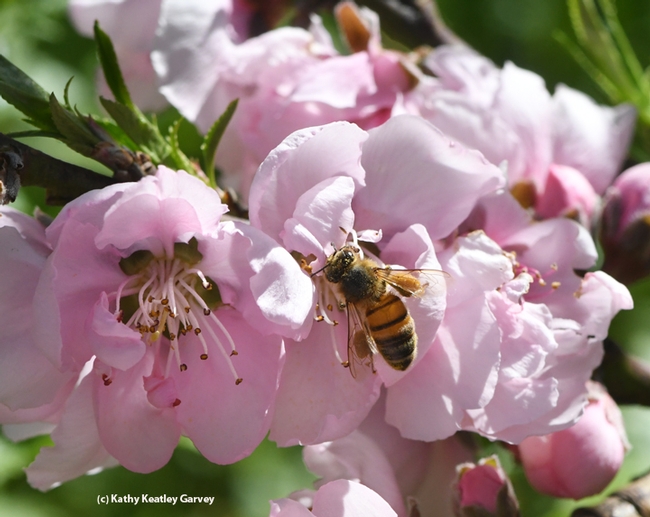
A foraging honey bee takes a liking to a nectarine blossom. (Photo by Kathy Keatley Garvey)
All Systems Are 'Bee' for UC Davis Bee Symposium
All systems are "bee" for the fourth annual UC Davis Bee Symposium: Keeping Bees Healthy, on Saturday, March 3. Except for a little liquid...
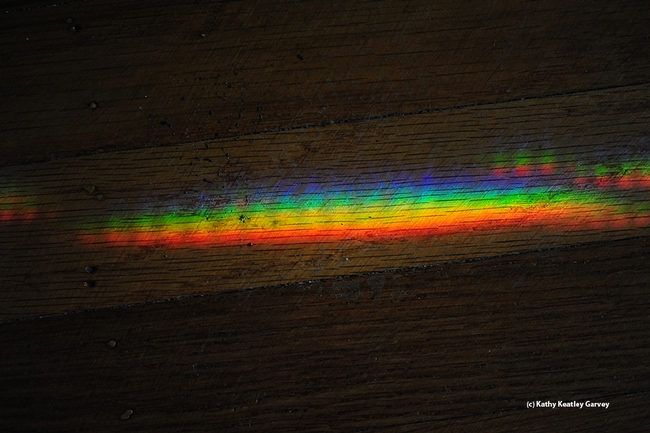
Odds are, due to the rain, you won't find any bees flying around Davis during the UC Davis Bee Symposium, but you might find a rainbow or a reflection. (Photo by Kathy Keatley Garvey)
California summer fruit smaller and tastier this year
"That smaller peach this year very likely is sweeter than the moderate-sized peach of last year," said Kevin Day, UC ANR Cooperative Extension advisor and director in Tulare and Kings counties.
Most of the change in fruit size can be attributed to the drought. When irrigation is limited, water content of the fruit diminishes and sugars become a greater proportion of the fruit mass. However, Day says drought isn't the only reason for 2015's smaller fruit size. California also had unusually warm temperatures in January and February 2015, causing fruit to ripen faster.
"A variety that might ripen after 120 days of being on a tree in a year like this ripens in only 110," Day said. "And, so it's consequently shortchanged out of 10 days of growing."
UC research on dwarf fruit trees featured on local news
Kevin Day, a UC Cooperative Extension farm advisor for Tulare County, has been comparing the quality of fruit on stone fruit trees pruned conventionally, in hedge rows and other configurations for 17 years. Now he and his colleague Ted DeJong, UCCE specialist in the Department of Plant Sciences at UC Davis, are taking a new look at small-sized trees, reported KSEE Channel 24 news in Fresno.
The idea is keeping the fruit trees short so ladders won't be necessary for harvest and other orchard operations, while at the same time maintaining excellent yield and fruit quality.
Day talked to the KSEE news crew in a peach and nectarine orchard at the UC Kearney Agricultural Research and Extension Center in Parlier.
"This is good news for farmers and farmworkers," said reporter Theresa Sardina. "This means safer working conditions for workers and less money out of farmers' pockets."
Day said the researchers are trying to better understand the labor savings aspect of small fruit trees, but he believes they will be proven to be significantly more cost effective.
"You can save a minimum of 25 if not up to 50 percent on any particular labor operations," Day said.
The lead agricultural technician at Kearney, Rudolfo Cisneros, was also interviewed for the story.
See the video on the KSEE Channel 24 website.


